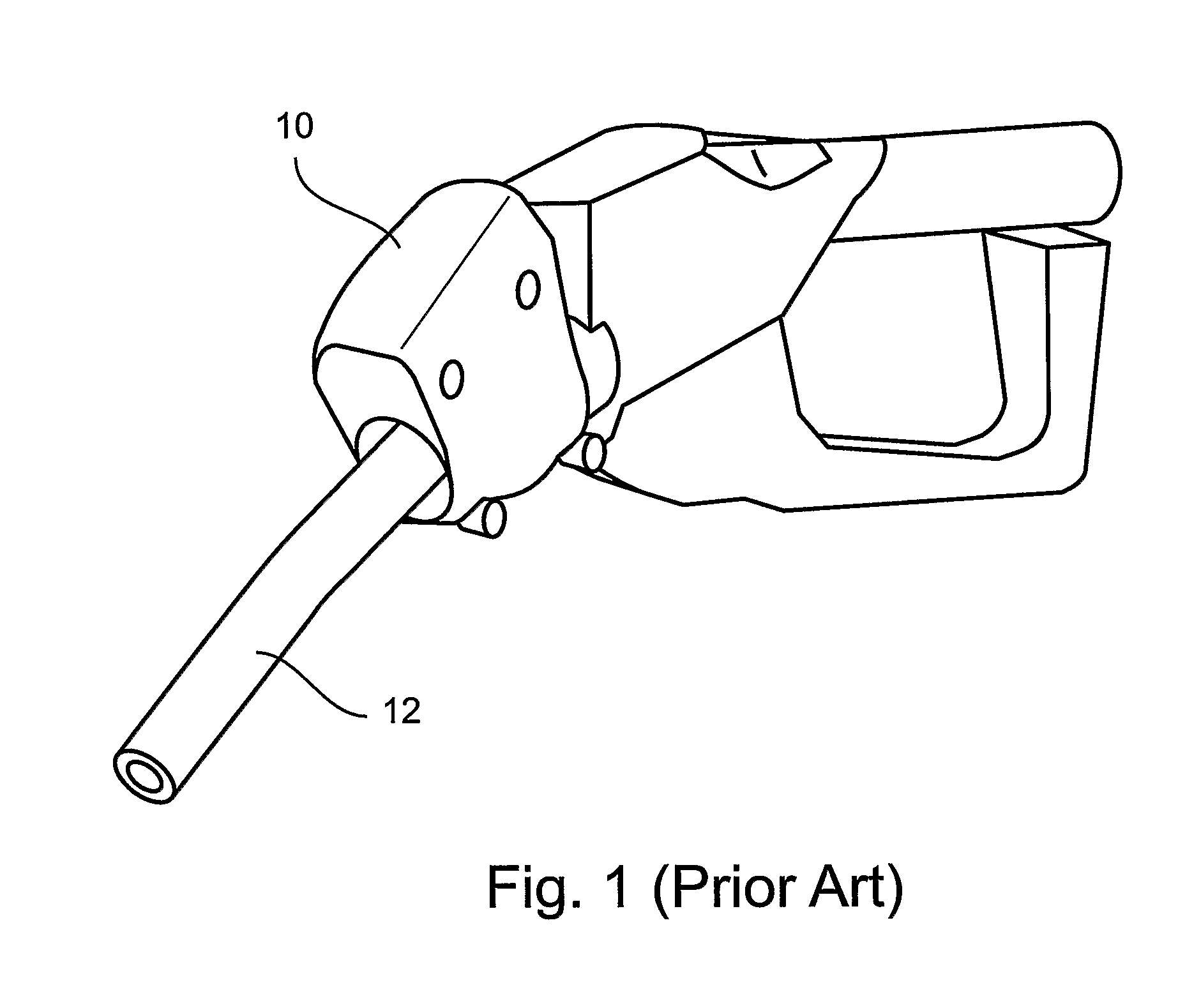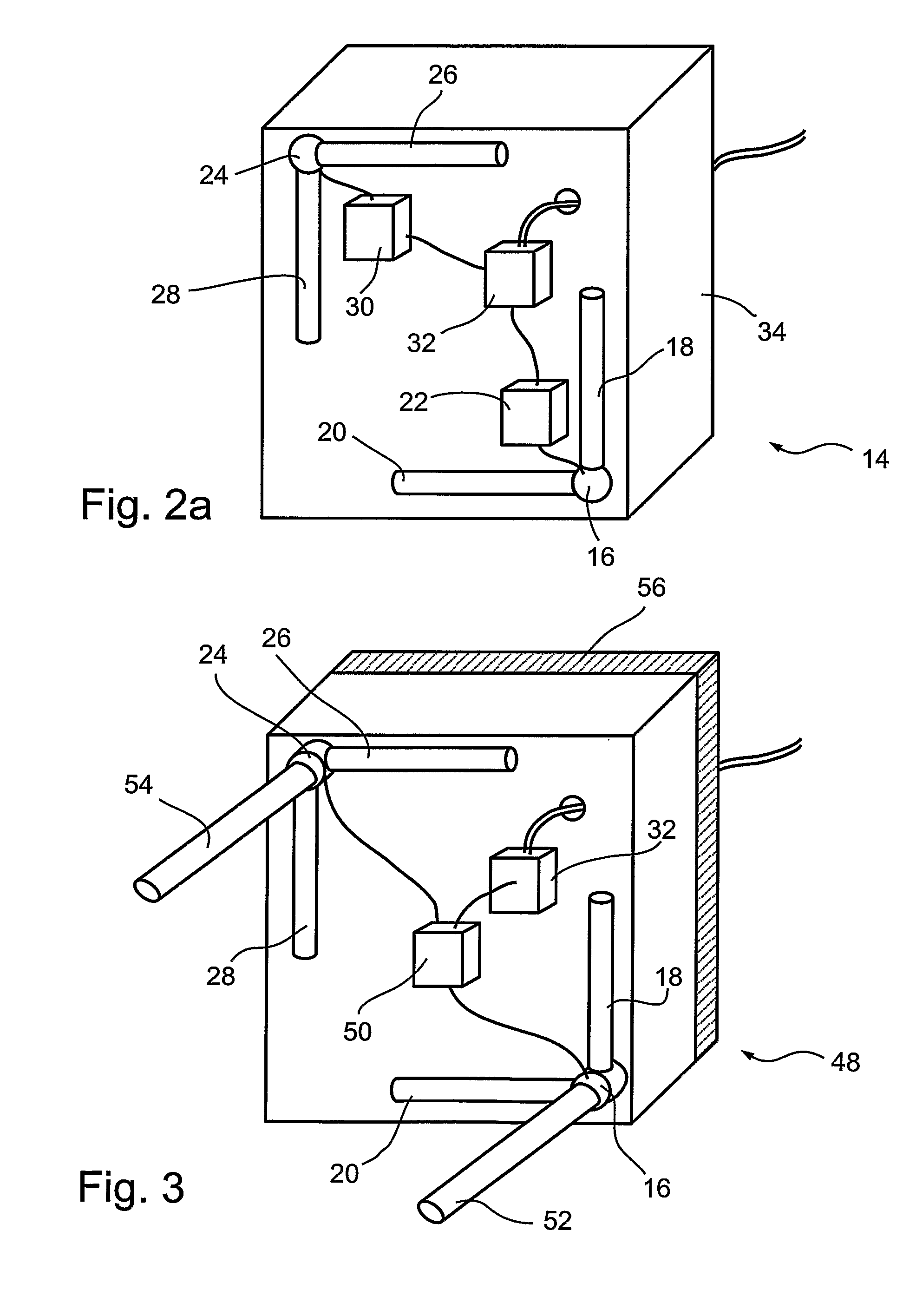Antenna assembly for service station
a technology for service stations and antennas, applied in the directions of polarisation/directional diversity, packaging under special atmospheric conditions, wireless commuication services, etc., can solve the problems of prohibitively expensive replacement of the system, difficult installation, maintenance and upgrading of the automated fuel payment system, and service stations using obsolete automated fuel payment systems
- Summary
- Abstract
- Description
- Claims
- Application Information
AI Technical Summary
Benefits of technology
Problems solved by technology
Method used
Image
Examples
first embodiment
[0114]an antenna assembly of the present invention, antenna assembly 14 is schematically depicted in FIG. 2A.
[0115]Antenna assembly 14 includes a reception antenna holder 16 to which are attached a vertically oriented first reception antenna 18 and a horizontally oriented second reception antenna 20. Reception antenna holder 16 holds first reception antenna 18 at a 90° angle from second reception antenna 20, so that antennae 18 and 20 define a plane. As both first antenna 18 and second antenna 20 are simple linearly polarized omnidirectional rod antenna, the orientations of the antennae define a plane that is substantially coplanar with the plane defined by the physical antennae. Functionally associated with first antenna 18 is a radio frequency receiver 22 so that receiver 22 is able to receive radio frequency signals through first antenna 18. Independently of the association with first antenna 18, receiver 22 is also functionally associated with second antenna 20 so that receiver ...
second embodiment
[0126]In FIG. 3 is depicted an antenna assembly of the present invention, antenna assembly 48.
[0127]Antenna assembly 48 of the present invention is substantially similar to antenna assembly 14. Unlike antenna assembly 14 that comprises receiver 22 separate from transmitter 30, antenna assembly 48 comprises a transceiver 50 where the receiver function of transceiver 50 is functionally associated with a first antenna 18 and a second antenna 20 and the transmitter function of transceiver 50 is functionally associated with a third antenna 28 and a fourth antenna 26.
[0128]A significant difference between antenna assembly 48 and antenna assembly 14 is that antenna assembly 48 comprises a fifth reception antenna 52 functionally associated with the receiver function of transceiver 50 independently of first antenna 18 and second antenna 20. Fifth antenna 52 is oriented at 90° relative to both first antenna 18 and second antenna 20 so therefore protrudes from and is necessarily substantially ...
third embodiment
[0132]In FIG. 4 is depicted an antenna assembly of the present invention, antenna assembly 58.
[0133]Antenna assembly 58 of the present invention is substantially similar to antenna assembly 14. Unlike antenna assembly 14 that comprises a receiver 22 and a transmitter 30, antenna assembly 58 does not comprise a receiver or a transmitter, but rather only includes a controller / adaptor 32 which is configured to interface with other devices, to receive power, to receive signals which are to be transmitted from other devices and to forward signals which are received by to other devices, for example signals to and from a transceiver of a service station controller.
[0134]A significant difference between antenna assembly 58 and antenna assembly 14 is that antenna assembly does not comprise dedicated transmission antennae such as third antenna 28 and fourth antenna 26 of antenna assembly 14. Rather antenna assembly 58 comprises a first antenna 18 (a vertically-oriented linearly polarized omni...
PUM
 Login to View More
Login to View More Abstract
Description
Claims
Application Information
 Login to View More
Login to View More - R&D
- Intellectual Property
- Life Sciences
- Materials
- Tech Scout
- Unparalleled Data Quality
- Higher Quality Content
- 60% Fewer Hallucinations
Browse by: Latest US Patents, China's latest patents, Technical Efficacy Thesaurus, Application Domain, Technology Topic, Popular Technical Reports.
© 2025 PatSnap. All rights reserved.Legal|Privacy policy|Modern Slavery Act Transparency Statement|Sitemap|About US| Contact US: help@patsnap.com



